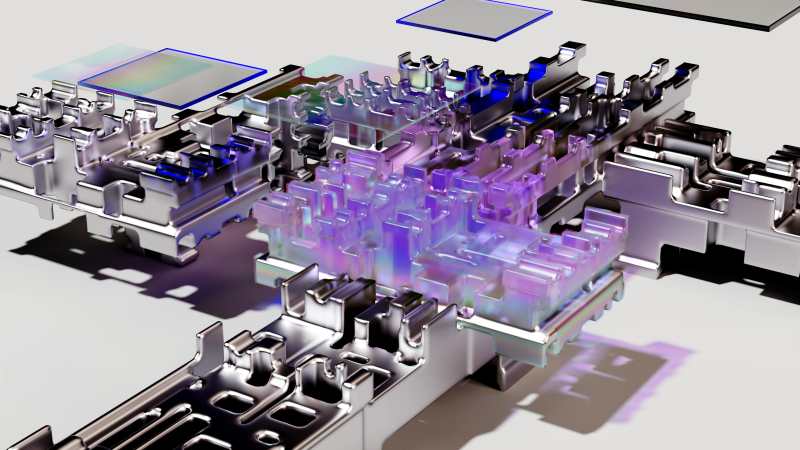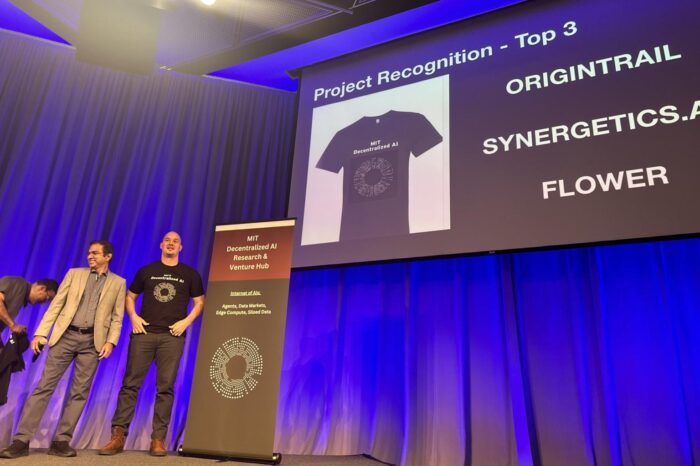AI and Crypto: How Machine Learning is Enhancing Blockchain Security

Crypto is one of technology’s many innovations that has won many over, thanks to the security blockchain offers. Discover how machine learning helps to maintain the immutable nature of blockchain technology.
Blockchain technology is what every cryptocurrency or crypto-related item is grounded on. This technological innovation is why crypto transactions are decentralized, automated, and relatively safer than traditional financial transactions. Although it has its security advantages, it’s not completely safe from threats. Fortunately, machine learning may be just what it needs to enhance its safety and protect users, which is what we’ll explore in this article. But first- here’s a sneak peek into what blockchain technology is.
Understanding the Nature of Blockchain Technology
Blockchain technology is a term almost everyone has heard about, but what is it exactly? Simply put, it’s structured to store records of transactions in databases in a network that’s connected to peer-to-peer nodes. Usually, this storage is called a digital ledger and can only be authorized by the owner’s digital signature, which gives it authenticity and prevents anyone from tampering with it. In other words, all anyone can do is just view the ledger.
With such security already mainstream, it’s easy to see why cryptocurrencies leverage this technology. Crypto users with the bestcryptowallet can rest assured that their transactions are safe with blockchain technology. Despite these, there are still some kinks that should be straightened out. For starters, it’s vulnerable to phishing, routing, and Sybil attacks. Moreover, crypto and blockchain run on private cryptographic keys that keep the funds safe. This means someone can lose them all if their keys get stolen or lost. Therefore, it makes sense that machine learning is compatible with keeping its security more robust.
The Fusion of AI, Machine Learning, and Blockchain Security
AI works with lots of data, which makes it a great fit for blockchain security. With these resources, it can quickly train itself to pinpoint anomalies that could become a threat to security.
Threat Detection Through Predictive Analysis
Machine learning is effective when predictive analysis is involved, as it can draw out patterns after analyzing historical data, great for identifying suspicious activities and making theft or digital ledger manipulation more difficult for hackers and cybercriminals. It gets even better with reinforcement learning, which is another subset of machine learning. Proving itself a game-changer for blockchain, reinforcement learning trains algorithms to make sequential decisions when they’re needed. This means always learning about new attack vectors and adapting to them. This way, blockchain networks would always be prepared for these evolving threats.
Detecting Fraud Through Neural Networks
In spite of blockchain technology’s immutable nature, criminals always find a way to manipulate it, leading to fraudulent activities on these networks. In fact, scammers have collected $679 million in cryptocurrency in the first half of 2024 only. Machine learning can address this problem through neural networks, which rely on training data to improve themselves over time. And once they are accurate, they can effectively sort through data at a high velocity. In relation to blockchain security, neural networks can analyze especially complex patterns, which fraudsters often hide behind. This way, it’s easier to detect and stop fraudulent transactions as quickly as possible.
In addition to this, blockchain security can also use generative adversarial networks (GANs) which use two neural networks (a generator and a discriminator) to simulate security breaches that scammers can potentially throw at them, and develop better defense mechanisms against them. With neural networks integrated into blockchain security, criminals will likely have a harder time detecting any vulnerability they can exploit. But like any other technology, AI-powered blockchain security is still open to improvement as time progresses.
What the Future Holds for Blockchain Security and Machine Learning
It’s in technology’s nature to keep evolving and getting better. This means that although machine learning and blockchain security are already groundbreaking, it’s not above advancements. With that in mind, cryptographic algorithms would become better with the help of AI, ultimately creating more fortified encryption methods that can stand their ground against more sophisticated threats.
In addition to this, machine learning algorithms can make privacy preservation mechanisms even better. This would mean that sensitive data on blockchain networks would remain anonymous and secure. Likewise, AI can make better interoperability among various blockchain networks possible, which is great for overall security. Despite these perks, some potential challenges still linger.
Potential Challenges of AI and Machine Learning in Blockchain Security
While the advantages shine bright, there are still concerns. For instance, data that machine learning trains with can have some bias, which could ultimately give rise to inaccurate threat assessments and overlooked vulnerabilities. This would be the leeway criminals need to hack the system. In addition to this, adversarial attacks can easily scale over machine learning defenses if care isn’t taken, as criminals also don’t rest and keep evolving their schemes. The good news is that technology always gets better and with more testing, more effective training will be available to AI to keep training itself to get the advantage over blockchain security threats.
How AI and Machine Learning Can Be Used for Blockchain Security
When using AI and machine learning for blockchain security, the first step is to figure out the specific security need, as it will help determine what AI systems will best fit the purpose. Once this is out of the way, the next step is to implement and train AI with sufficient data to single out threats and vulnerabilities accurately and quickly. While at it, don’t forget to keep monitoring and updating the AI systems to prepare them for more sophisticated attacks.
Blockchain technology is a giant leap towards safe transactions today, which makes it the go-to tech in the crypto world. But it isn’t perfect, and has some vulnerabilities, making AI and machine learning a compatible solution. Thanks to its nature, machine learning can quickly adapt to whatever new threats will come its way, which will also give way to more robust blockchain security.




